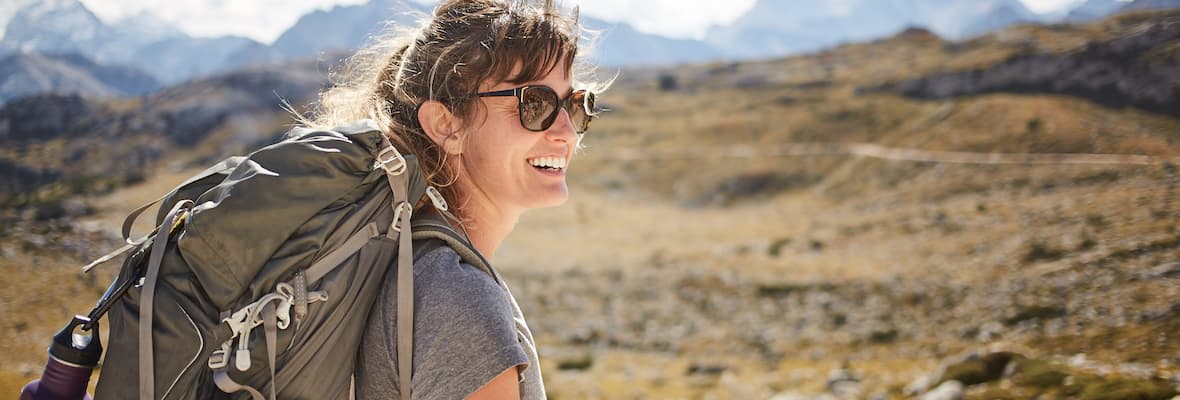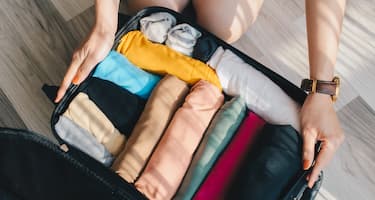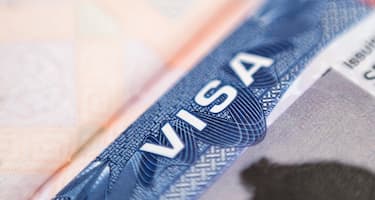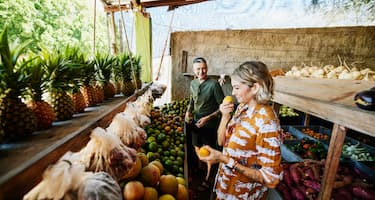Backpacking is one of the best ways to see the world. Not only does a backpacking trip give you more freedom to move from place to place without having to lug suitcases around, but it's also usually more cost-effective.
Whether you go alone or with a group of friends, learning the backpacking basics means you can spend less money on accommodation and more on making memories.
So if you're looking to pack up and go travelling anytime soon, check out our backpacking guide to get the most out of your time exploring the world.
Choose Your Destination
Whether it's your first backpacking trip or you're a bit more experienced, you’ll still want to choose your backpacking destination as early as possible.
Choosing where you're heading can determine what backpacking gear you'll need to take to get you to the location. If you're not super experienced in backpacking, choosing somewhere that's easy to access and navigate can help ease you into the experience.
When heading on your first backpacking trip, you can try to:
- Consult with more experienced backpackers
- Pick a well-travelled and well-established camp that's close to home
- Make sure there’s water near the camp
- Seek out warmer weather
- Use a walk-in campground
Staying Close to Home
Although heading overseas can be an exciting time, a good backpacking tip is to stay closer to home for your first trip.
When it comes to backpacking, Australia has so much to offer. For instance, you can see some idyllic beaches on both sides of the country whether it's Western Australia or along the east coast at hotspots including Gold Coast or Byron Bay.
Alternatively, you can head inland to Kakadu National Park in Australia's Northern Territory or up the range to the Blue Mountains in New South Wales.
Plus with the freedom to move around more easily, there's more opportunity to see a range of places. When backpacking, you can visit major cities and tourist attractions like the Sydney Harbour Bridge while also checking out national parks and natural landmarks such as the Great Barrier Reef or Litchfield National Park in northern Australia.
Saving Money
On a backpacking trip, you're usually set to miss out on a bit of luxury to stretch your dollar further. For the most part, your budget is likely to be used on accommodation, food and activities.
Accommodation
You have the option of staying in a hostel, motel, hotel or camp. Hostels can offer shared dorm rooms or private rooms with a shared bathroom. One of the best ways to save money is to choose hostels that have a shared kitchen so you can prepare your meals rather than buying takeaway.
While it's the least luxurious option, camping can be the most cost-effective form of accommodation. If you have a tent and sleeping bag, all you'll need to pay is the occasional camping fee. However, you can also keep an eye out for free camping spots to save even more.
Food
One of the best backpacking tips to save money is to plan what you’ll eat for breakfast, lunch and dinner.
You can opt for freeze-dried backpacking food, which can be the easiest option, or head to the grocery store and cook at your accommodation or while camping.
While you may not want to miss out on the culinary experience of travelling, it's helpful to have a food budget to make sure you're not spending too much on going out to eat.
Activities
Depending on what you want to do, organised activities and tours can be expensive. It's worth asking the front desk at your hostel or doing your own research to find low-cost activities around town such as walking tours or art galleries.
Getting around by train or public transport is also a great way to save money and explore your surroundings a bit better.
Choosing the Right Backpack
Choosing the right backpack before you go on your trip is key. If you’re not careful, you could end up with the wrong-sized backpack, giving you back pain throughout your trip.
You’ll also need to make sure that it’s secure enough and has enough space to carry all your belongings without feeling too much pack weight on your back.
Most backpacks are measured in litres. Smaller daypacks have a 15 to 40 L capacity and large hiking or travel packs can be in the 45 to 100 L range. There are a number of different backpack types. However, three options include hiking or expedition packs, travel packs and hybrid packs.
Hiking or Expedition Packs
These can be used to carry a lot of weight while hiking. They also include hip belts and can open up at the top, sometimes with additional access near the bottom of the backpack.
The main advantage of this backpack is its tough material exterior. However, these packs can make it harder to access gear that’s furthest from the small opening.
Travel Packs
Travel backpacks can be more user-friendly. A typical travel pack can have at least two or three zippered compartments which can provide easier access to your gear.
Many of these packs also include access to the main compartment through the front of the backpack, just like a suitcase.
Some backpacks come with a separate daypack that can be carried together with the main pack or used separately while sightseeing.
Hybrid Packs
Hybrid packs can be a combination of the best parts of a hiking pack and a travel pack.
These backpacks can come in canvas and nylon materials. While a canvas pack can be more durable, a nylon pack can be lighter in weight.
Before you purchase a hybrid backpack make sure you properly fit the pack to your body. You can check that all the straps are adjusted and your weight is evenly distributed while wearing the backpack to avoid any injuries.
Packing Hacks For Your Next Adventure
To significantly reduce your pack weight, focus on bringing only the essentials and smart gear choices. It’s important to cull on any non-essentials; this requires discipline but is highly effective.
Choose clothes that are lightweight, weather-proof and made from quick-drying fabrics such as nylon or polyester.
When you are thinking of what gear you’ll need; it will depend on where you plan to travel to, what the weather is forecast to be, if you’re choosing to camp, and if you have access to cooking facilities.
Gear
- Tent
- Backpack
- Sleeping bag
- Sleeping pad
- Backpacking stove
- Water treatment (water filter or purifier)
- Kitchen supplies
- First aid kit
- Plastic bag (for dirty clothes or rubbish)
- Toilet paper
Clothing
- Base layers or thermals
- T-shirt for warmer weather
- Hat
- Long sleeve shirt for sun protection, cool weather or insect protection
- Nylon pants
- Waterproof jacket
- Lightweight pullover
- Joggers, hiking boots or waterproof footwear
Try to base your travel packing list on the temperature, location, length of your trip, what you’ll be doing and whether you’ll wash clothes in that time.
Preparing for Your Trip
When heading on a backpacking trip, you should try to be mentally and physically prepared.
Physical Preparation
- Complete smaller day trips with your backpack on.
- Do frequent cardio, including walking at an elevation gain, to improve your fitness.
- Do frequent weight lifting to build the strength needed to hold your backpack without causing injury.
Mental Preparation
- Become familiar with the clothes and backpacking gear that you'll bring.
- Create a trip planner to give to family and friends back home so they are aware of where you'll be and when.
- Pack early so you can fit in any last-minute items if they need to be added.
- Schedule calls with family and friends while you’re gone to stay connected with loved ones back home.
Get Travel Insurance
The good part about backpacking is that you have all your belongings together in one place. But the bad part is the fact that if your bag gets stolen, lost or damaged, you could lose everything all at once.
This is why you should consider the right protection for your belongings. Travel insurance could help protect you against loss or damage and might even mean the difference between an exciting getaway and a disaster.






